The Canadian National Vimy Memorial in dramatic white stone dominates the surrounding landscape from the top of Vimy Ridge. It marks the battlefield on which four divisions of Canadians* managed to dislodge three German divisions from their entrenched and fortified positions on the ridge over three days of bloody fighting in April 1917.
In 1914, Canada was a dominion of Great Britain and so when war started Canada was automatically at war too. Britain’s dominions – South Africa, Australia, Canada, New Zealand – were given options on the form their contribution to the war effort would take; either money, men or munitions/armament. Canada contributed all three, in particular men. Canada had no free standing army so all the men were volunteers.
The battle for Vimy Ridge is considered a landmark battle in World War One because the Canadians, working together for the first time in one national corps, applied new tactics and detailed planning to their assault, resulting in a spectacular victory. It brought enormous prestige to Canada and her troops and is often referred to as the birth of the Canadian nation.
The Battle of Vimy Ridge
After the grisly battles of Ypres and the Somme with their huge casualties, the Canadians were determined to learn lessons from what went wrong and organise and prepare themselves properly for the assault on Vimy Ridge. They made a number of changes to the traditional approach of the British Army.
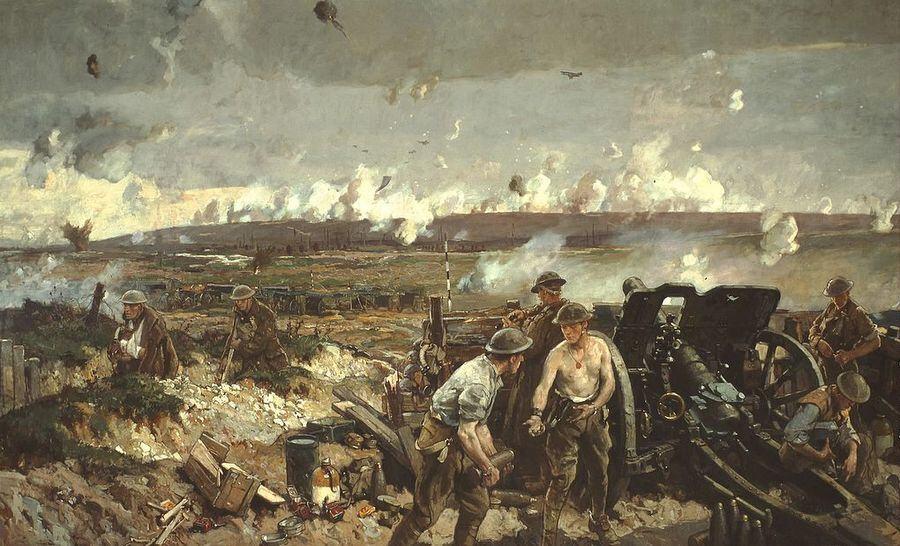
For a start, every man was told what was expected of them. They were even issued with maps! In the past only officers saw maps! Now, if their officer was killed, the troops knew what their objectives were and how to get there.
They practised the assault. They laid out rehearsal grounds with tapes marking trenches and obstacles, and then practised on them. They developed a sense of the distances they would have to advance, and a pace (The “Vimy Glide” – 33 yards per minutes) at which they should advance so that a rolling barrage could precede them.
They created a special brigade of machine guns whose function was to spray to Germans’ supply lines at night in the week before the attack to restrict German supplies.
They methodically pinpointed German artillery positions using flash-spotting, sound ranging and aerial observation so that the Canadian counter batteries could take them out at the start of the attack before they were able to fire on the advancing troops.
They prepared an aerial offensive to secure air superiority over the battlefield on the day.
And, most significantly, they dug twelve long tunnels running from the rear lines right up to the forward trenches so that they could move supplies, munitions and men into position without the Germans, who had a commanding view of Allied activities, realising they were there.
So it was something of a shock for the German 6th Army at 0530 Easter Monday 9th April 1917 when 983 guns opened up and Canadian troops in huge numbers appeared out of the front line trenches! Especially for the Germans facing the Canadian 3rd Division near the memorial, where the lines were so close (about 30 metres away), they barely had time to get out of their bunkers before being overrun.
The Canadian troops advanced at a steady pace behind the creeping artillery barrage which fired for three minutes & then increased the range by 100m. The Canadian counter batteries fired on all the previously mapped German artillery positions and then started responding to live targeting data sent from spotter planes when new & unknown batteries opened fire. In this way they managed to silence 176 of 212 German batteries.
British commanders had mocked the detailed Canadian battleplan with its precise timings laid down for every move and every objective, ending in the seizure of the ridge by early afternoon. But the plan ran almost like clockwork and by the end of the afternoon most of the ridge was captured.
Not everything ran to plan and it took another two days to capture the village of Thélus and the final objective, a fortified knoll located outside the village of Givenchy-en-Gohelle.
By the end of the three day battle, which is seen as a complete tactical victory for the Canadians, they had suffered 10,602 casualties including 3,600 dead. German casualties are unknown but are thought to be much higher. 4,000 Germans were taken prisoner.
If you have time (1½ hours), there is a very good Timeline World History documentary on the battle on Youtube.
Visiting Vimy Ridge
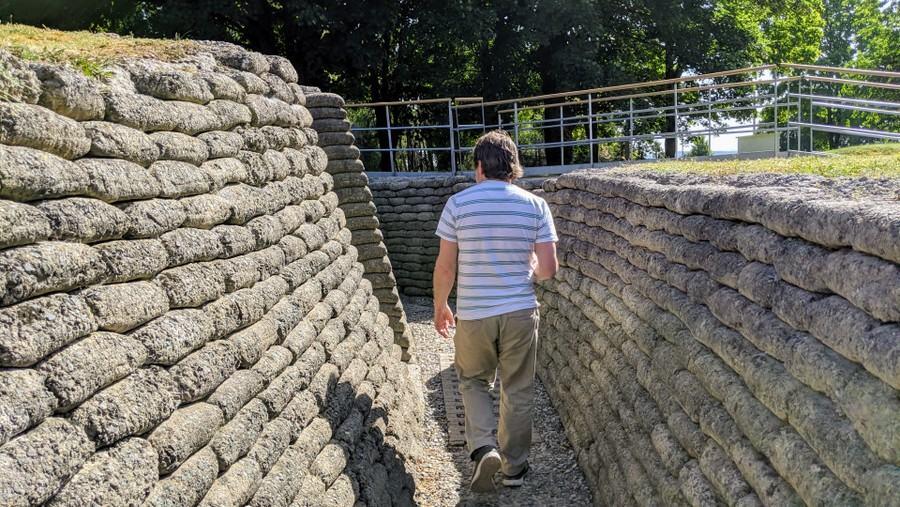
It’s worth doing a little research before you go because it’s easy to get confused about what you are looking at.
Vimy Ridge is a chalk escarpment running at an angle SE to NW, not simply east-west with the Germans in the north and the Allies in the south. More confusingly, it’s the wrong way around! The name suggests a steep sloped ridge, which it is, but it is not the steep scarp face that the Canadians had to assault. It is the gently rising reverse slope. Once you get that, it all begins to make sense.
I would recommend watching Stephen Upton’s drone footage of Vimy Ridge on Youtube. Not only do you get to understand the overall layout, you can see the frontline trenches and the devastating effect of the shells and massive underground mines still clearly visible on the ground. (Also, enjoy his comments at the end about unexploded mines and the local roads!)
There are several sites or elements in and around the Vimy Ridge Memorial on the 100 hectares of land given to Canada by France in 1922 in gratitude for sacrifices made by Canada in WW1…
- The Memorial monument itself.
- The Vimy Ridge Visitor Education Centre.
- The preserved tunnels & trenches next to the Visitor Centre.
- A number of cemeteries and smaller memorials.
The Canadian National Vimy Memorial
The magnificent white stone memorial sits at the top of ‘Hill 145’, the heavily defended, highest point of the ridge.
The monument, designed by Canadian architect and sculptor, Walter Seymour Allward, is a memorial not just to the soldiers killed at Vimy Ridge but to all 61,000 Canadians who gave their lives in WW1.
Work started, delicately, on the monument in 1925. The ground was littered with unexploded ordnance which had to be found and cleared for the 15,000 tonnes of concrete used for the base. Six thousand tonnes of white limestone were shipped in from Croatia (then Yugoslavia) to form the plinth, the two 27 metre pylons and carvings. The main sculptures were carved in temporary building on site. Allward’s two pylons represent Canada and France, united in the fight for peace and freedom. Around the base there are the names of 11,285 Canadians who were killed in France but whose final resting places are unknown.
The completed monument was unveiled by King Edward VIII on 26 July 1936. Funny to think, the German Army was back on the ridge four years later!
The Vimy Ridge Visitor Education Centre
The Vimy Ridge Visitor Education Centre is a comparatively new facility. It was inaugurated in 2017 following the 100th anniversary of Battle of Vimy Ridge.
It houses a reflective exhibition of artifacts and personal stories from the events on the ridge in April 1917, and details about the monument itself.
There is also a temporary exhibition space used for cultural presentations and displays. This year it is currently housing ‘Faces of Freedom’ a collection of around 25 profiles of Canadian soldiers from the First World War to the war in Afghanistan.
The Vimy Ridge Tunnels & Trenches
There are 1.2 sq km of preserved trenches and tunnels next to the Visitor Centre. The tunnels and trenches immediately next to the Visitor Centre would have been occupied by the Canadian 3rd Division. Astonishingly, the German 79th Reserve Division trenches are only 30 metres away at this point in the sector.

The Visitor Centre operates 50 minute tours of the tunnels & trenches, guided by young bi-lingual Canadian students on 4-month federal government work experience programmes. The tours are free. You can just turn up and hope to get on one if it’s not too busy, but the advice is to book.
The tour starts in one of the main tunnels, which was called ‘Grange Subway’.
On the morning of 9th April 1917, there would have been upward of 900 men in here. They would have been waiting for 36 hours in this space, poised and ready to flood into the trenches where the tour exits.
The main tunnels were about 6ft 6ins (2m) high and 3ft (0.9m) wide. In the build-up to the offensive some had light rail tracks to carry supplies and munitions to the frontline trenches. In places they opened out into small caverns. In one of these you can see the rusty remains of some of the machinery needed in the tunnels – air pumps for keeping the oxygen levels up, and water pumps to handle any flooding. The tunnels were roughly 30-40 metres below the surface, so there was always the risk of dropping below the water table. There was an ‘upside’ though. Water seeping through the chalk was potable and could be stored in cisterns for drinking, cooking & washing.
The Germans had seized the ridge in October 1914, so they had been tunnelling into the soft chalk for a long time before the Canadians arrived. Then a war of tunnels broke out, with both sides extending out towards each other’s trenches, listening for the sounds of tunnelling and laying charges to collapse the enemy tunnels. Sometimes Canadian tunnels opened out into German tunnels resulting in hand to hand combat. The main purpose of the “deep fighting tunnels” under ‘no mans land’ was to set mines under enemy positions, and at Vimy Ridge some two hundred mines were exploded. In the tour you can explore one of those narrow deep fighting tunnels.
Cemeteries & Memorials
Close by the main monument, within around 700 metres, there are two large cemeteries to visit – the Canadian Cemetery No. 2 and the Givenchy Road Canadian Cemetery.
There is also a small monument dedicated to the ‘Zoaves’, the 1st Division of the Moroccan Foreign Legion, who fought their way to the top of the ridge in May 1915 and held it… for a few hours.
There are a couple of memorials and cemeteries within a 2km radius of the main memorial – the Canadian Cemetery at Givenchy-en-Gohelle, Zivy Crater cemetery, and Lichfield crater memorial.
* The offensive was not entirely Canadian. There were also British 1st Army elements – mostly artillery, engineers and tunnellers – attached to the Canadian Corps, and the British 5th Division with some infantry brigades attached, but mostly artillery, mortar & machine gun companies and engineers.
Declaration: I was on a press trip as a guest of Nord-pas-de-Calais Tourism.
Factbox
Website:
Canadian National Vimy Memorial
Getting there:
Canadian National Vimy Memorial
Route D55
62580 Givenchy-en-Gohelle
France
The ridge is approximately ten kilometres north of Arras. It’s easiest to visit independently by car.
Opening Hours:
The main memorial and nearby cemeteries & memorials are open to the public 24/7 all year round. The Visitor Education Centre is also open every day but hours vary:
| 01 April – 30 September |
|---|
| Tuesday – Sunday |
| 10:00 am to 6:00 pm |
| Monday |
| 12:00 pm to 6:00 pm |
| 01 October – 31 March |
|---|
| Tuesday – Sunday |
| 9:00 am to 5:00 pm |
| Monday |
| 11:00 am to 5:00 pm |
Guided Tours
Guided tours (max 25) of the tunnels and trenches are available free of charge subject to availability. It is recommended that visitors pre-book, but for groups of 10 people or under, tours are available on a first come, first served basis as capacity dictates. Tour reservations can’t be made for mondays and some public holidays.

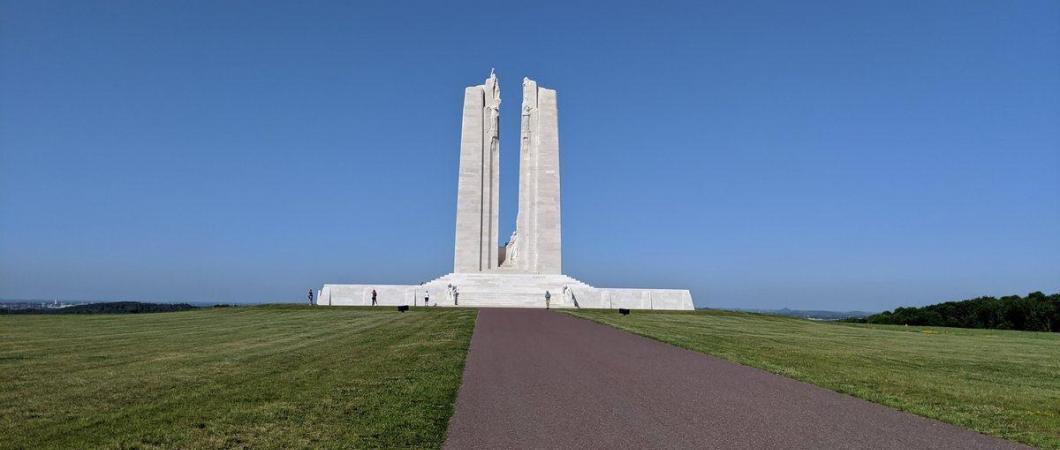
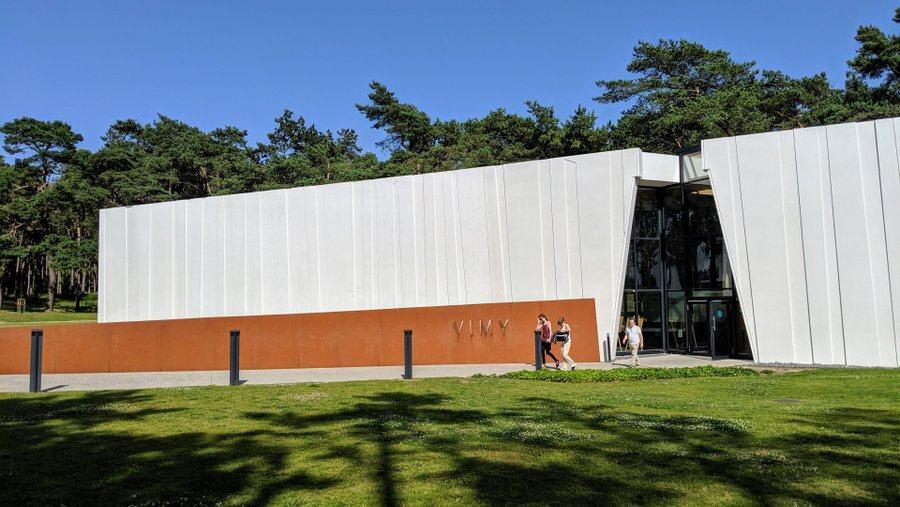
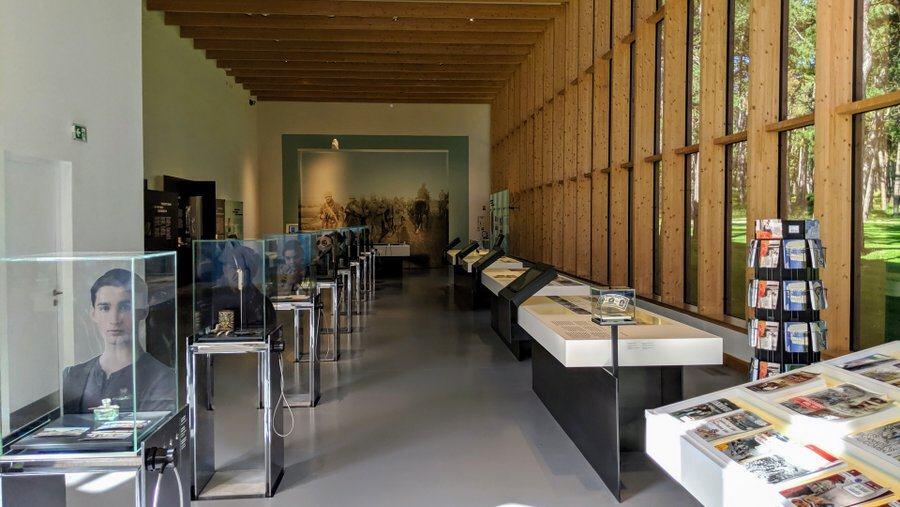
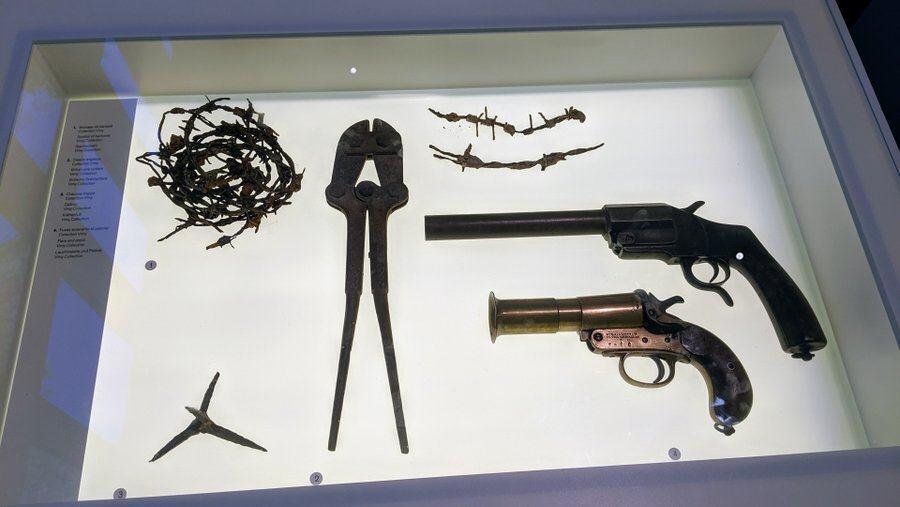
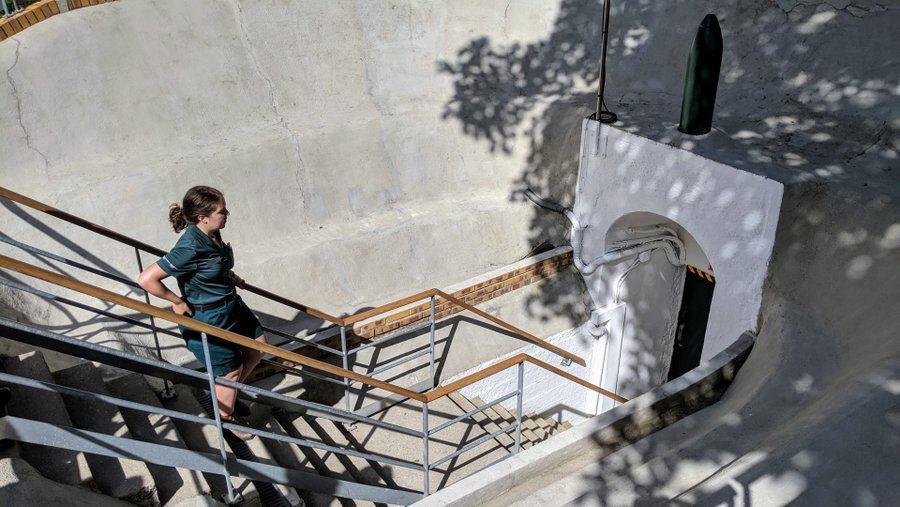
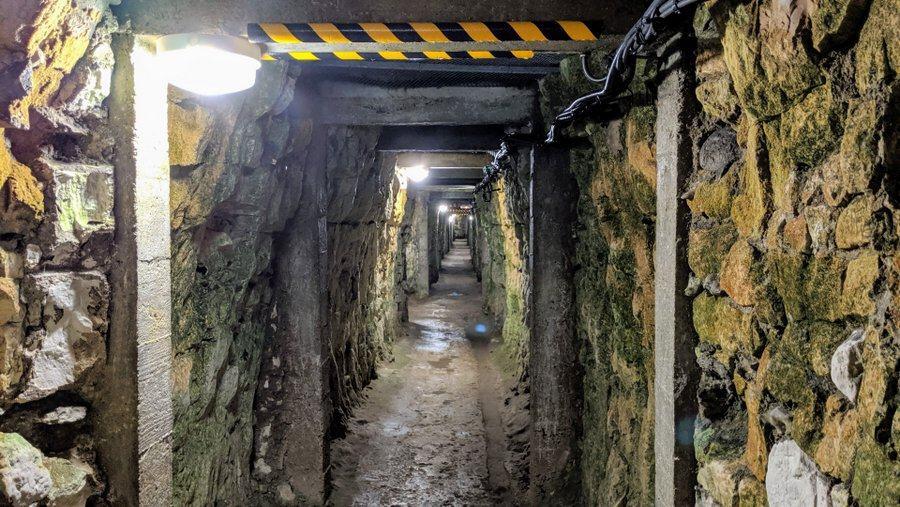
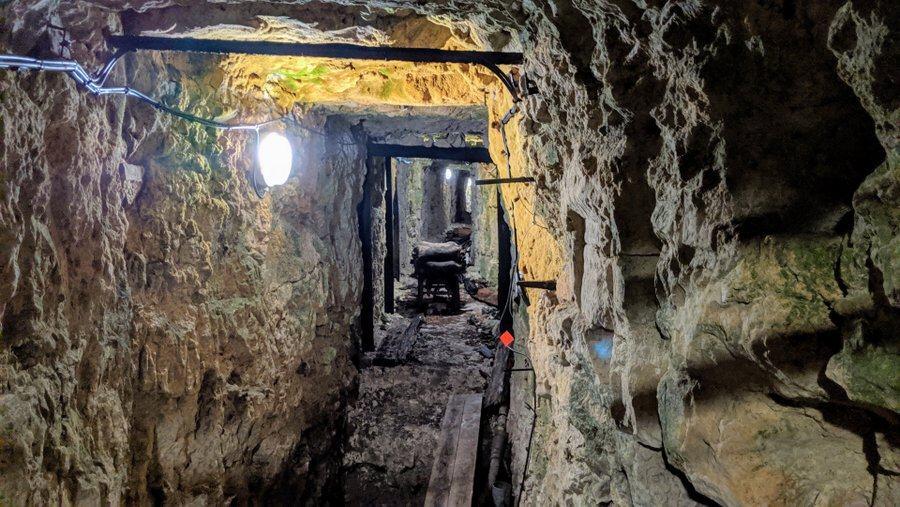
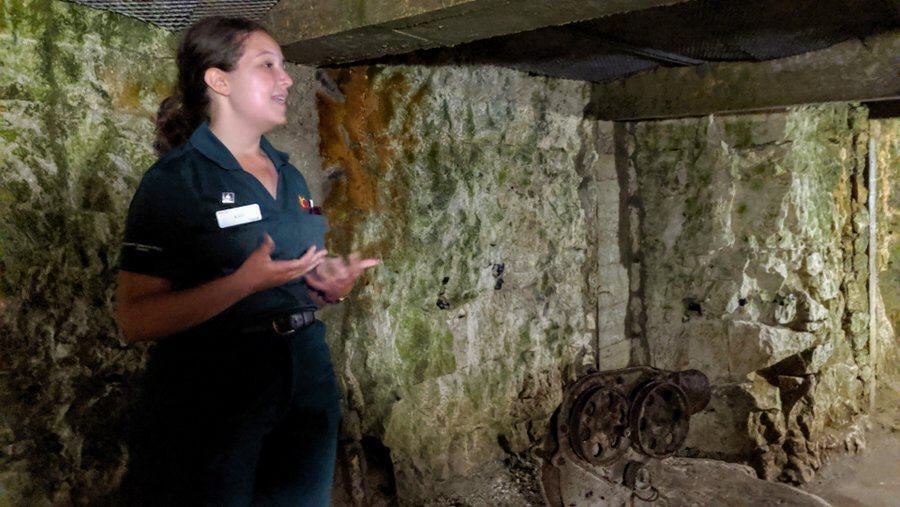
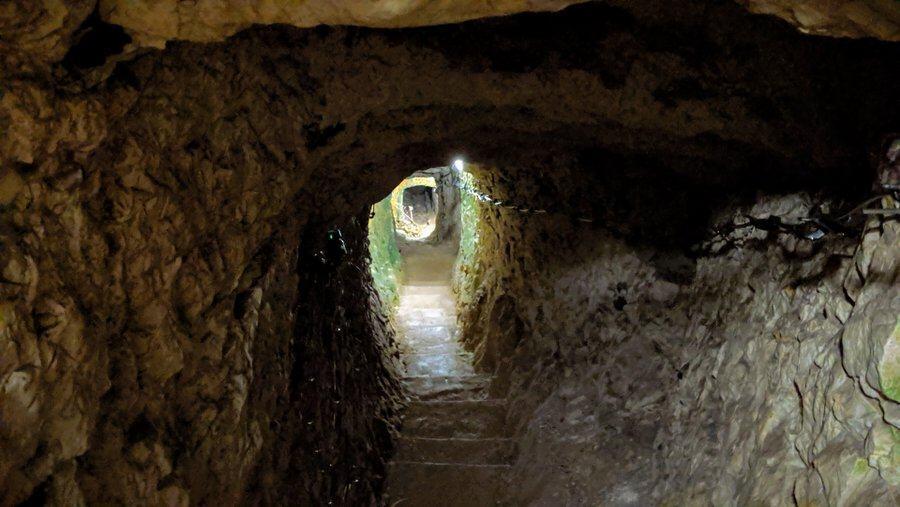
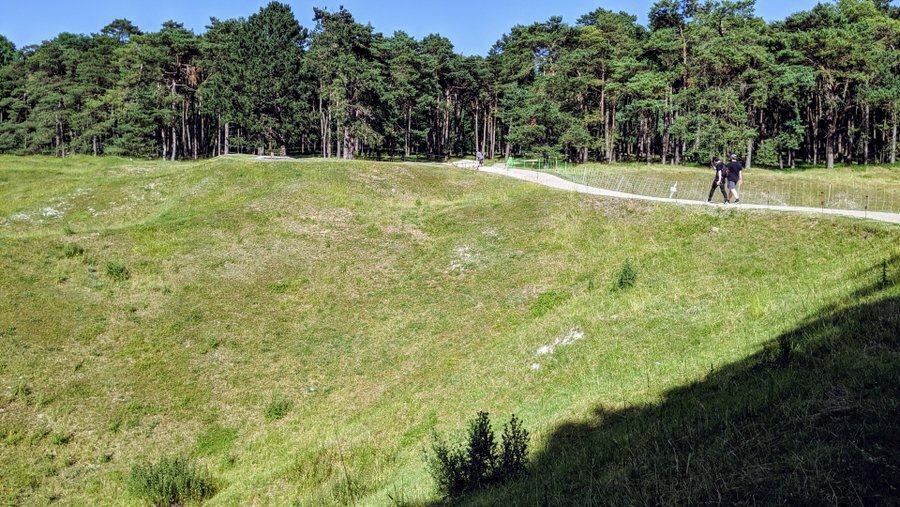

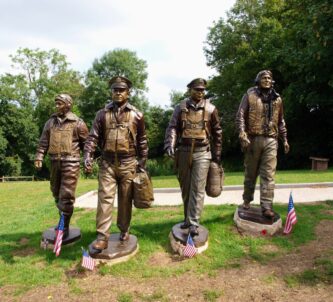
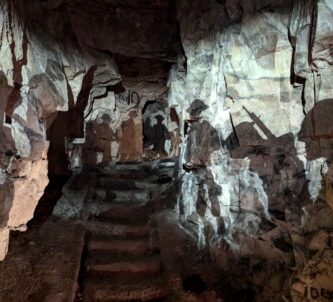
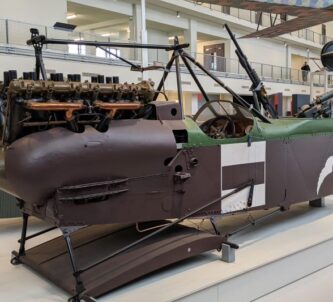


[…] quite heavy – 10,000 in just three days – The Germans were no match for the Canuck onslaught. The final goala fort outside the village of Givenchy-en-Gohelle, it fell to the Canadians on April […]